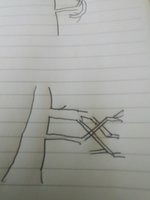luvinthemountains
Chumono
I think the thread title introduces the purpose of this topic succinctly. If you are confused, just google it.
Since my early days in bonsai, I have heard that you should wire movement into your branch extensions on deciduous trees, let the wire start to bite in, then cut back hard to an inner bud/shoot - thereby removing long sections with movement. I have always wondered...why? I cannot think of a single explanation rooted in plant physiology that this would produce any better result in the long run. The only possible explanation that I can think of is that it leads to better discipline in wiring. That is, forcing yourself to wire extensions tricks you somehow into wiring better movement into the parts that you are going to keep. Still, there seem to be better ways to develop that discipline without the enormous waste of wire and time.
I am not referring to wiring extensions away from the center to avoid shading out lower/inner growth. This is specifically about wiring for movement in extensions that you know you plan to cut off.
What am I missing?
Since my early days in bonsai, I have heard that you should wire movement into your branch extensions on deciduous trees, let the wire start to bite in, then cut back hard to an inner bud/shoot - thereby removing long sections with movement. I have always wondered...why? I cannot think of a single explanation rooted in plant physiology that this would produce any better result in the long run. The only possible explanation that I can think of is that it leads to better discipline in wiring. That is, forcing yourself to wire extensions tricks you somehow into wiring better movement into the parts that you are going to keep. Still, there seem to be better ways to develop that discipline without the enormous waste of wire and time.
I am not referring to wiring extensions away from the center to avoid shading out lower/inner growth. This is specifically about wiring for movement in extensions that you know you plan to cut off.
What am I missing?

